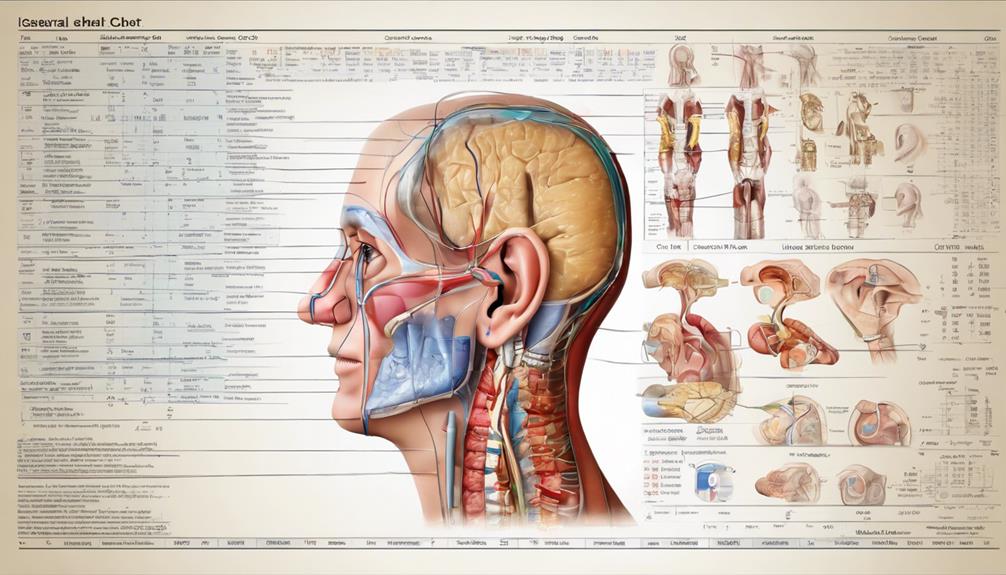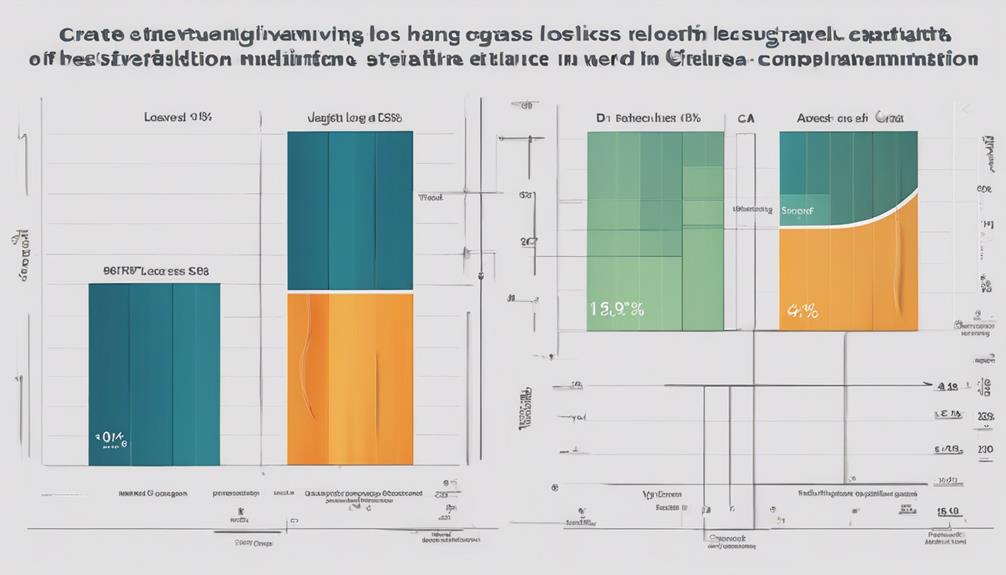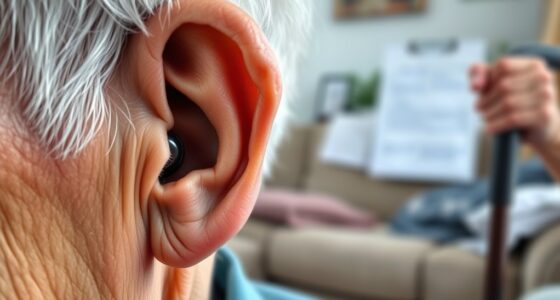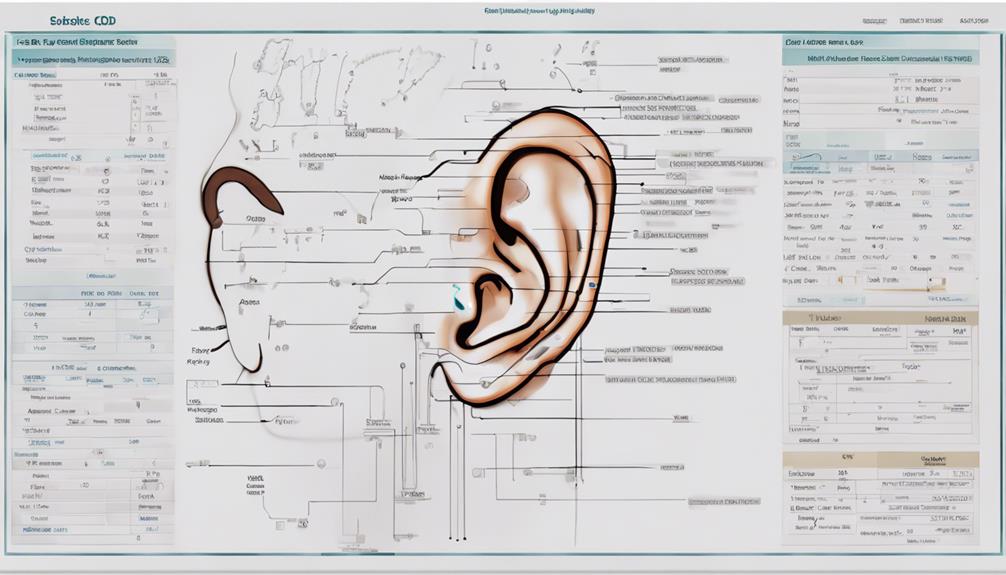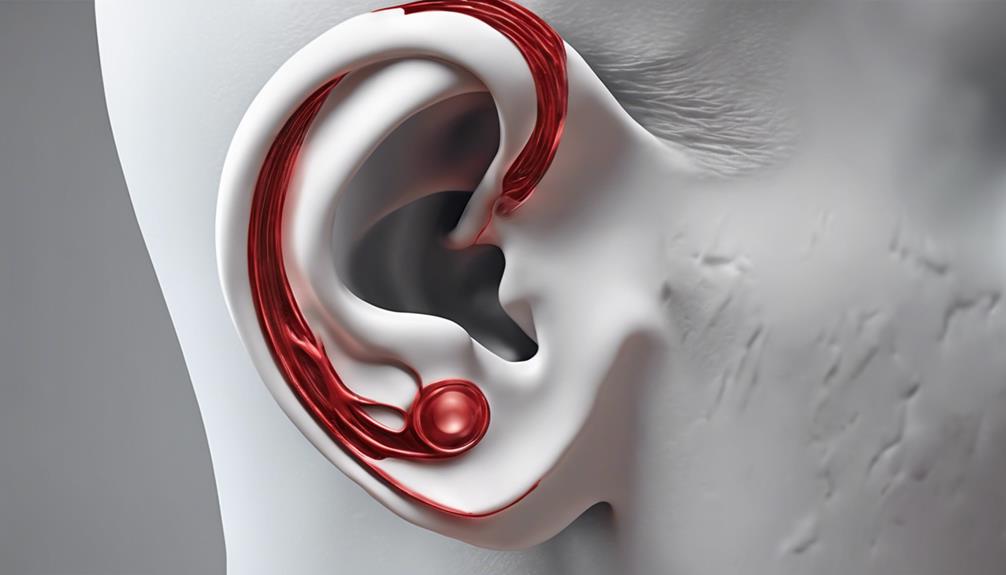Have you ever wondered how healthcare professionals accurately document sensorineural hearing loss in both ears using ICD codes?
Understanding the intricacies of coding for such conditions is vital for medical professionals. With the potential impact on treatment plans and patient care, delving into the specifics of the ICD Code for Sensorineural Hearing Loss Bilateral, like its nuances and implications, can provide valuable insights.
Exploring the comprehensive guide on this code can shed light on its significance in the realm of healthcare documentation and management.
Key Takeaways
- Diagnosis of bilateral sensorineural hearing loss requires thorough assessments and audiometric testing.
- Proper ICD-10 coding with H90.3 is essential for accurate billing and tracking of patients.
- Treatment options include hearing aids, cochlear implants, assistive devices, and therapy for improved communication.
- Detailed documentation of type, severity, and cause of hearing loss is crucial for treatment planning and reimbursement.
Causes of Sensorineural Hearing Loss
Sensorineural hearing loss arises primarily from damage to the inner ear or auditory nerve, as indicated by the ICD-10-CM code H90.3. Various factors contribute to this condition, including aging, exposure to loud noise, genetic predisposition, infections, and head trauma. Ototoxic medications, tumors affecting the auditory pathways, autoimmune disorders targeting the inner ear structures, and conditions like Meniere's disease can also result in sensorineural hearing loss.
Diagnosing the specific cause of sensorineural hearing loss is crucial in determining the most appropriate management strategy. Audiologists utilize a combination of comprehensive medical history reviews, physical examinations, and diagnostic tests such as audiograms and imaging studies to identify the underlying issues.
Early detection of sensorineural hearing loss allows for timely interventions like hearing aids or cochlear implants, which can significantly improve the quality of life for affected individuals. Proper management of these contributing factors is essential in preventing or slowing down the progression of sensorineural hearing loss.
Symptoms of Bilateral Hearing Loss
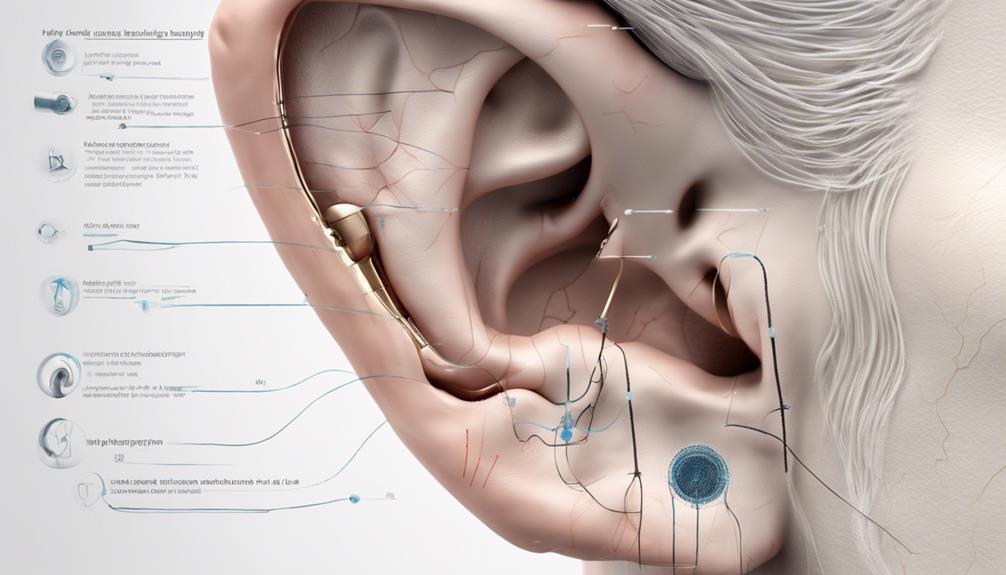
When individuals experience bilateral hearing loss, they may notice a decreased ability to hear various sounds from both sides, impacting their daily auditory experiences. This condition, often classified under ICD-10-CM Codes, presents specific symptoms that can significantly affect one's quality of life. Some common symptoms of bilateral hearing loss include:
- Difficulty hearing conversations clearly
- Struggles with discerning music or environmental noises
- Challenges in localizing sounds in space
- Impaired balance and spatial awareness due to compromised auditory input
- Potential need for hearing aids, cochlear implants, or other assistive devices
These symptoms highlight the multifaceted nature of bilateral hearing loss, emphasizing the intricate relationship between auditory perception and overall well-being. Understanding these manifestations is crucial for prompt diagnosis and intervention to improve the lives of individuals experiencing bilateral sensorineural hearing loss.
Diagnosis and ICD Coding
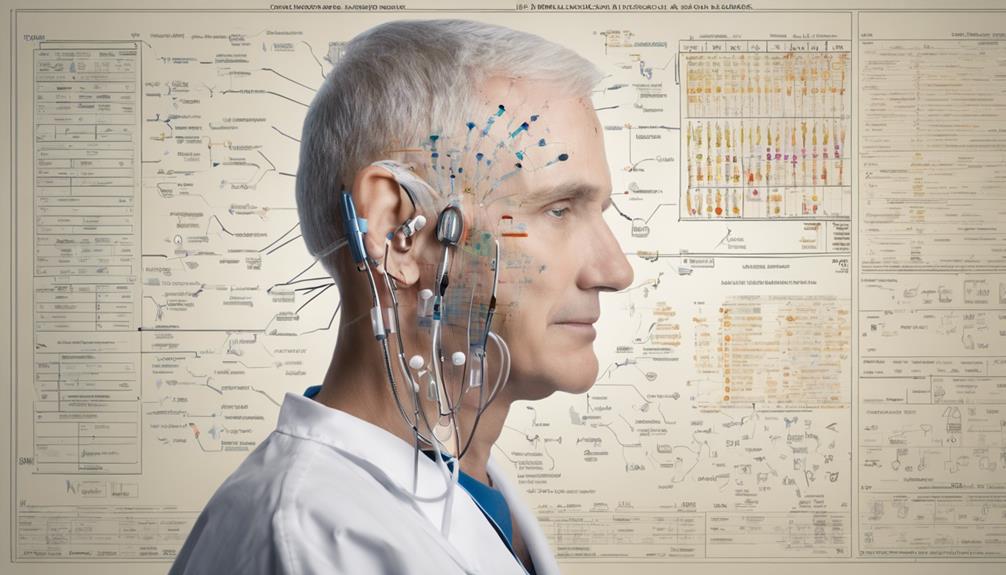
For accurate documentation and treatment planning, healthcare providers must ensure proper diagnosis and coding of bilateral sensorineural hearing loss using the designated ICD-10 code H90.3.
When diagnosing bilateral sensorineural hearing loss, providers conduct thorough assessments to determine the extent and nature of the impairment. This includes audiometric testing, medical history review, and physical examinations to identify potential causes such as genetic predisposition, noise exposure, or underlying health conditions.
Once the diagnosis is confirmed, assigning the appropriate ICD-10 code H90.3 is crucial for accurate billing and tracking of the condition. Proper coding ensures that patients receive the necessary care and interventions specific to bilateral sensorineural hearing loss.
Healthcare facilities rely on correct coding and billing practices to streamline reimbursement processes and maintain organized medical records. Understanding the nuances of coding for sensorineural hearing loss aids in effective communication among healthcare teams and promotes optimal patient outcomes.
Treatment Options for Bilateral Loss

Exploring various treatment modalities for bilateral sensorineural hearing loss is crucial for enhancing auditory function and quality of life. When considering treatment options for bilateral hearing loss, individuals may benefit from the following approaches:
- Hearing Aids: These devices can amplify sound and improve the ability to hear speech and other sounds.
- Cochlear Implants: Surgical implantation of these devices can be an option for individuals with severe bilateral sensorineural hearing loss.
- Assistive Listening Devices: These tools, such as FM systems or captioned telephones, can enhance communication in various settings.
- Auditory Training and Speech Therapy: These interventions can help individuals with bilateral hearing loss improve their communication skills.
- Counseling and Support Groups: Emotional and social support are essential for coping with the challenges of bilateral sensorineural hearing loss.
Regular follow-up care with an audiologist or otolaryngologist is crucial to monitor progression and adjust treatments as necessary for individuals with bilateral sensorineural hearing loss.
Importance of Proper Documentation
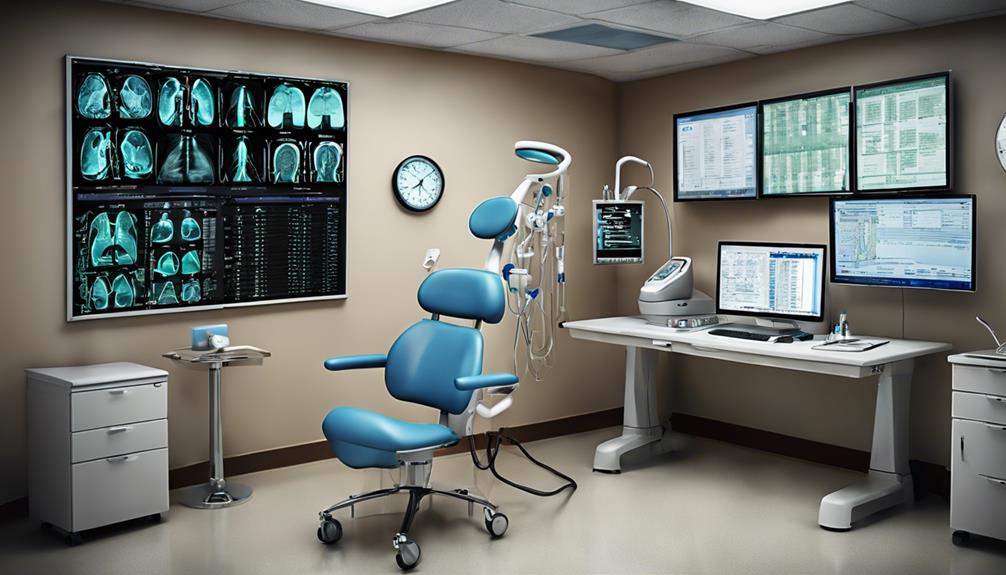
Proper documentation plays a crucial role in ensuring accurate coding and billing of sensorineural hearing loss cases. Detailed documentation is vital as it helps justify the medical necessity of services provided for hearing loss. It's essential to include specific details about the type, severity, and cause of sensorineural hearing loss in the documentation. By documenting thoroughly, healthcare providers can support appropriate treatment planning and care coordination for patients with bilateral sensorineural hearing loss.
Moreover, accurate documentation is key to ensuring compliance with payer policies, which ultimately reduces claim denials. Proper documentation not only assists in providing quality patient care but also facilitates the coding process. Clear and detailed documentation enables the assignment of the correct ICD codes for sensorineural hearing loss, leading to accurate billing and reimbursement. Therefore, healthcare professionals must prioritize meticulous documentation practices to effectively manage and treat patients with sensorineural hearing loss.
Frequently Asked Questions
What Is the ICD-10 Code for Sensorineural Hearing Loss Bilaterally?
We use the ICD-10 code H90.3 for bilateral sensorineural hearing loss. It signifies impairment in both ears, affecting the inner ear or auditory nerve.
This permanent condition requires accurate coding for proper diagnosis and treatment planning. Remember, using the correct code is crucial for medical records and billing procedures.
What Is the 2023 ICD-10 Code for Sensorineural Hearing Loss?
When it comes to the 2023 ICD-10 code for sensorineural hearing loss, the code to keep in mind is H90.3. This specific code falls under the category of Diseases of the ear and mastoid process in the ICD-10 coding system.
It's essential to accurately apply this code for proper claim management and reimbursement in healthcare settings. Remember, factors like aging, noise exposure, disease, and heredity can contribute to sensorineural hearing loss.
What Is the ICD-10 Bil Hearing Loss Bilateral?
We use the ICD-10 code H90.3 for bilateral sensorineural hearing loss. This code is crucial for identifying and treating hearing loss affecting both ears. It encompasses various causes like genetics, aging, noise exposure, and medical conditions.
Accurate coding ensures proper billing and effective treatment planning. Early diagnosis and management are vital for individuals experiencing bilateral sensorineural hearing loss to maintain quality of life and communication skills.
What Is the ICD Code for Sensorineural Hearing Loss Unspecified?
The ICD code for sensorineural hearing loss unspecified is H90.2. It's utilized when the type of sensorineural hearing loss isn't specified as bilateral or unilateral.
This code denotes a lack of specificity in diagnosing sensorineural hearing loss. Healthcare providers apply this code when the exact nature of the hearing loss is unclear.
Accurate documentation and evaluation play a crucial role in determining the specific type of sensorineural hearing loss.
Conclusion
In conclusion, understanding the ICD code H90.3 for sensorineural hearing loss bilateral is essential for accurate diagnosis and treatment planning. Proper documentation plays a crucial role in healthcare settings, ensuring effective communication and continuity of care.
By adhering to coding guidelines and consulting healthcare professionals, we can streamline the process and improve outcomes for patients. Remember, precision in documentation is the key to successful treatment.
Stay informed, stay proactive, and prioritize accurate coding for optimal patient care.

